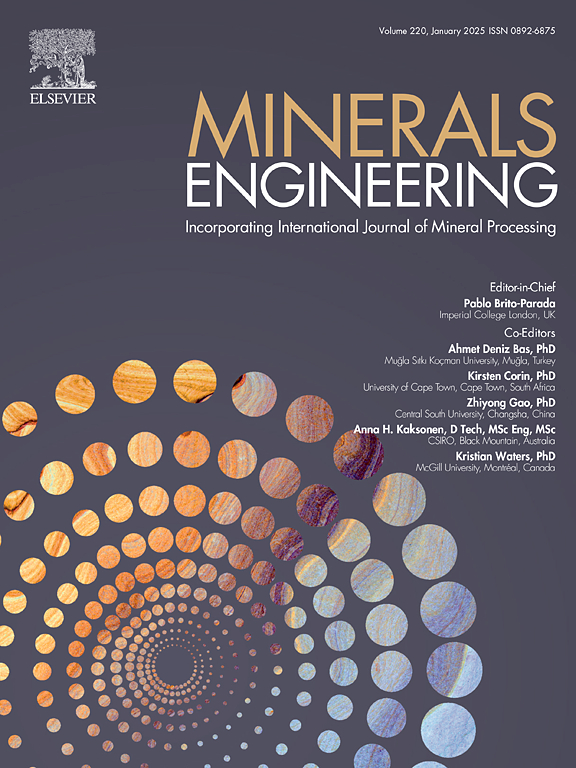Adsorption removal of Entrapped LIX 984N from acidic copper sulfate electrolyte using Nano-Porous silica aerogel
IF 4.9
2区 工程技术
Q1 ENGINEERING, CHEMICAL
引用次数: 0
Abstract
Entrapment of organic solvents in the aqueous phase is the main drawback of hydrometallurgical extraction of copper, which leads to lower quality of the produced cathodes in the electrowinning (EW) process. To address this challenge, a synthesized hydrophobic nano-porous silica aerogel was utilized to selectively eliminate the organic solvent in the ppm range, namely commercial LIX984N (a mixture of 5-nonyl salicylaldoxime (C16H25NO2) and 2-hydroxy-5-nonyl acetophenone (C14H13NO2) at the same volume, which is diluted in kerosene) from the acidic copper sulfate electrolyte. The effects of adsorbent characteristics and process parameters on the adsorption performance of the organic solvent were investigated and discussed in detail. The optimum conditions of the adsorption process were also identified using the response surface methodology (RSM) based on central composite design (CCD). ANOVA analysis revealed a linear-quadratic model for organic solvent elimination, with significant adsorption factors including contact time, initial organic solvent concentration, and sol pH. A second-order model was proposed to predict the adsorption behavior of organic solvent using silica aerogel, and the optimized process parameters, including contact time, sol pH, and initial concentration of adsorbate, were obtained 120 min, pH = 4, and 20 ppm, respectively. The efficiency of organic solvent removal using the synthesized hydrophobic nano-porous silica aerogel was obtained by about 90 %.

求助全文
约1分钟内获得全文
求助全文
来源期刊

Minerals Engineering
工程技术-工程:化工
CiteScore
8.70
自引率
18.80%
发文量
519
审稿时长
81 days
期刊介绍:
The purpose of the journal is to provide for the rapid publication of topical papers featuring the latest developments in the allied fields of mineral processing and extractive metallurgy. Its wide ranging coverage of research and practical (operating) topics includes physical separation methods, such as comminution, flotation concentration and dewatering, chemical methods such as bio-, hydro-, and electro-metallurgy, analytical techniques, process control, simulation and instrumentation, and mineralogical aspects of processing. Environmental issues, particularly those pertaining to sustainable development, will also be strongly covered.
 求助内容:
求助内容: 应助结果提醒方式:
应助结果提醒方式:


